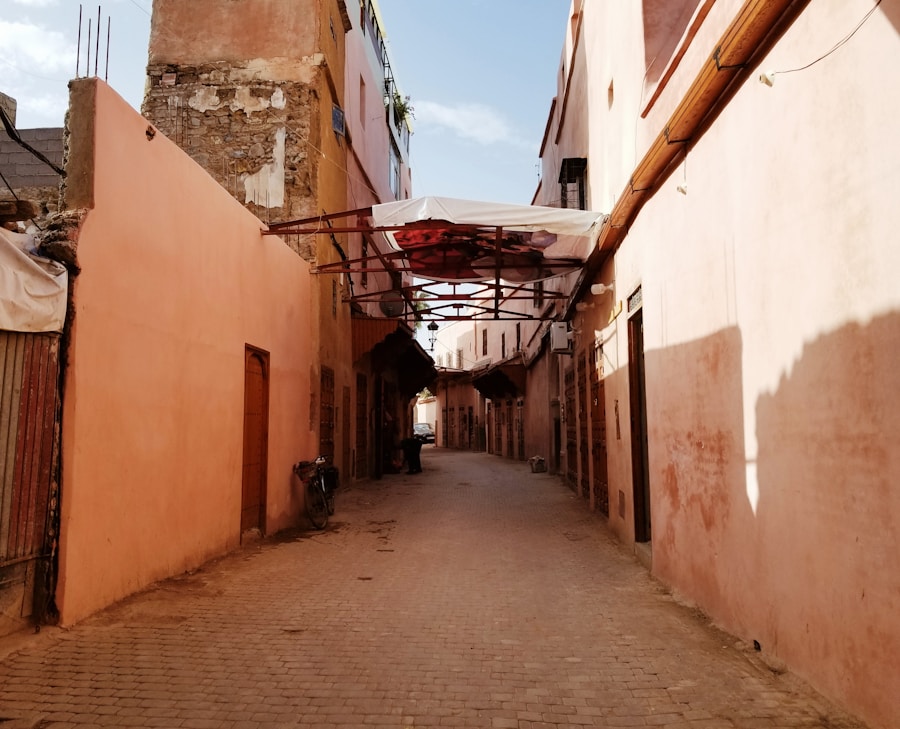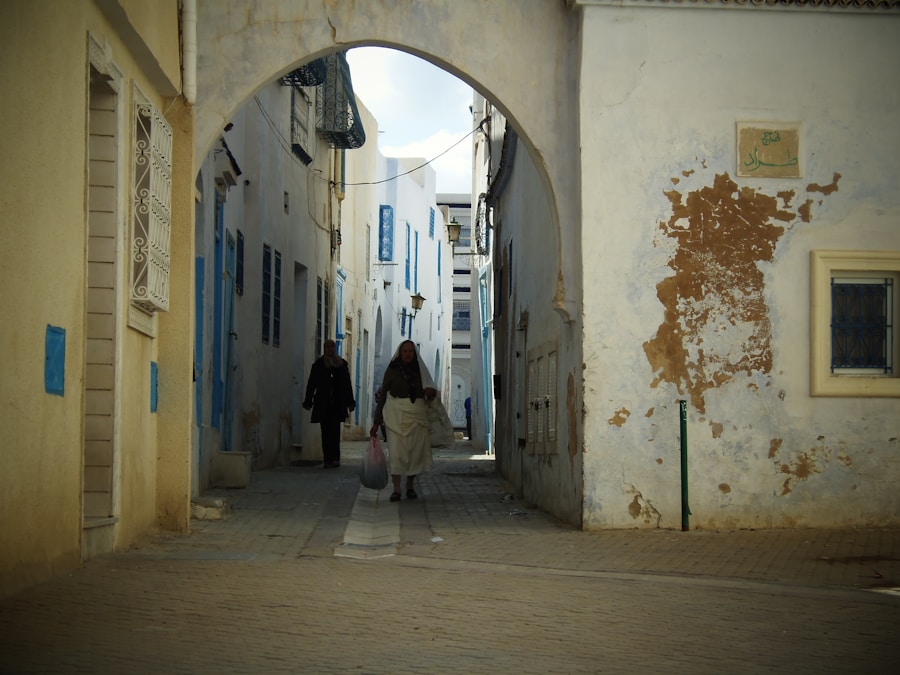When preparing for the sacred journeys of Hajj and Umrah, packing efficiently is crucial to ensure a smooth pilgrimage experience. Pilgrims should begin by assembling a list of essential items that cater to both spiritual and practical needs. The first category of essentials includes religious items such as a Quran, prayer mat, and a compass for determining the Qibla direction.
These items are vital for maintaining one’s spiritual focus during the pilgrimage. Additionally, it is advisable to carry a small bag or pouch to keep these items organized and easily accessible throughout the journey. Beyond religious artifacts, pilgrims must also consider their personal comfort and health.
Lightweight, breathable clothing is essential due to the hot climate of Saudi Arabia, especially during the summer months. Men typically wear the Ihram, a simple white garment that symbolizes purity and equality, while women should opt for loose-fitting attire that covers their arms and legs. Comfortable footwear is equally important, as pilgrims will be walking long distances.
A pair of sturdy sandals or shoes that provide good support can make a significant difference in overall comfort. Furthermore, packing a small first-aid kit with basic medications, sunscreen, and insect repellent can help address minor health issues that may arise during the pilgrimage.
Key Takeaways
- Pack light and bring only essential items for Hajj and Umrah to make traveling easier.
- Prioritize health and safety by staying hydrated, wearing comfortable shoes, and being mindful of personal hygiene.
- Choose accommodations that are close to the holy sites and offer necessary amenities for a comfortable stay.
- Consider transportation options such as buses, trains, or taxis for convenient travel between pilgrimage sites.
- Create a budget and stick to it, while also keeping emergency funds for unexpected expenses during Hajj and Umrah.
Health and Safety Tips for Pilgrimage Travel
Hydration and Nutrition
Pilgrims should prioritize hydration, as the hot climate can lead to dehydration quickly. Carrying a reusable water bottle is advisable, as it allows for easy access to water throughout the day. Additionally, it is wise to consume light meals that are easy to digest, avoiding overly spicy or heavy foods that could lead to gastrointestinal discomfort.
Vaccination and Preventive Care
Another critical aspect of health during the pilgrimage is vaccination and preventive care. Before embarking on the journey, pilgrims should consult with healthcare professionals regarding necessary vaccinations, such as those for meningitis and seasonal flu.
Medical Emergency Preparedness
It is also beneficial to have travel insurance that covers medical emergencies, as this can provide peace of mind in case of unexpected health issues. Pilgrims should familiarize themselves with local healthcare facilities in Mecca and Medina, ensuring they know where to seek assistance if needed.
Choosing the Right Accommodations for Hajj and Umrah

Selecting suitable accommodations is a vital part of planning for Hajj and Umrah, as it can significantly impact the overall experience of the pilgrimage. Proximity to the holy sites is often a primary consideration; many pilgrims prefer hotels or lodgings within walking distance of the Masjid al-Haram in Mecca or the Prophet’s Mosque in Medina. This convenience allows for easier access to prayers and rituals without the stress of long commutes.
In addition to location, pilgrims should consider the amenities offered by their chosen accommodations. Many hotels cater specifically to pilgrims, providing services such as meal plans that align with prayer times and shuttle services to key locations. It is also essential to read reviews from previous guests to gauge the quality of service and cleanliness.
Budget constraints may influence accommodation choices; however, it is crucial not to compromise on safety and comfort. Booking well in advance can help secure better rates and availability during peak pilgrimage seasons.
Transportation Options for Pilgrimage Travel
Navigating between holy sites during Hajj and Umrah requires careful consideration of transportation options available in Saudi Arabia. The most common mode of transport is buses, which are often provided by tour operators or local agencies specifically for pilgrims. These buses are typically air-conditioned and designed to accommodate large groups, making them a convenient choice for traveling between Mecca, Medina, and other significant locations such as Mina and Arafat during Hajj.
In addition to buses, taxis are readily available in urban areas, offering a more flexible option for those who prefer private transport. Ride-hailing services have also gained popularity in recent years, providing an alternative for pilgrims who wish to avoid crowded public transport. However, it is essential to negotiate fares or ensure that the meter is running before starting a journey to avoid misunderstandings.
For those who enjoy walking, many pilgrims choose to traverse shorter distances on foot, allowing them to immerse themselves in the spiritual atmosphere while engaging with fellow travelers.
Managing Finances and Budgeting for Hajj and Umrah
Financial planning is an integral part of preparing for Hajj and Umrah, as costs can accumulate quickly when considering travel expenses, accommodation, meals, and additional activities.
This budget should include not only the cost of flights and lodging but also daily expenses such as food, transportation, and souvenirs.
It is wise to set aside an emergency fund for unexpected costs that may arise during the journey. Using cash in Saudi Arabia is common; however, having a credit or debit card can provide added convenience for larger purchases or emergencies. Pilgrims should inform their banks about their travel plans to avoid any issues with card usage abroad.
Additionally, it is advisable to exchange currency before arriving in Saudi Arabia or at authorized exchange centers within the country to ensure fair rates. Keeping track of expenses through a mobile app or a simple notebook can help pilgrims stay within their budget while allowing them to enjoy their pilgrimage without financial stress.
Staying Connected and Informed during Pilgrimage Travel

In today’s digital age, staying connected while on pilgrimage has become increasingly important for many travelers. Pilgrims should consider purchasing a local SIM card upon arrival in Saudi Arabia to ensure they have access to mobile data and can communicate with family or fellow travelers easily. This connectivity allows for real-time updates on prayer times, transportation schedules, and any changes in plans that may arise during the pilgrimage.
Moreover, utilizing social media platforms can enhance the pilgrimage experience by allowing pilgrims to share their journey with others and connect with fellow travelers from around the world. Many organizations also provide apps specifically designed for Hajj and Umrah pilgrims that offer valuable information such as maps of holy sites, guidance on rituals, and tips for navigating crowds. Staying informed about local news and updates regarding health advisories or safety measures is equally important; pilgrims should regularly check official sources or trusted news outlets for any relevant information.
Dress Code and Cultural Etiquette for Hajj and Umrah
Understanding the dress code and cultural etiquette associated with Hajj and Umrah is essential for all pilgrims. The Ihram garment worn by men consists of two white unstitched cloths that symbolize purity and equality before God. Women are encouraged to wear modest clothing that covers their arms and legs; while there is no specific uniform like the Ihram for women, they should dress conservatively in accordance with Islamic principles.
Cultural etiquette extends beyond clothing; it encompasses behavior as well. Pilgrims are expected to exhibit patience, humility, and respect towards others throughout their journey. This includes refraining from arguments or disputes, maintaining a calm demeanor in crowded situations, and being considerate of fellow pilgrims’ personal space.
Understanding these cultural nuances not only enhances personal experiences but also fosters a sense of community among pilgrims from diverse backgrounds.
Navigating Crowds and Managing Stress during Pilgrimage Travel
The sheer volume of people participating in Hajj and Umrah can be overwhelming at times; therefore, developing strategies for navigating crowds is essential for maintaining composure during the pilgrimage. One effective approach is to plan visits to key sites during off-peak hours when crowds are thinner. For instance, performing Tawaf (the circumambulation around the Kaaba) early in the morning or late at night can provide a more serene experience compared to peak hours when thousands of pilgrims gather.
Stress management techniques can also play a significant role in enhancing the pilgrimage experience. Practicing mindfulness through deep breathing exercises or engaging in short moments of reflection can help alleviate anxiety when faced with large crowds or long waits. Additionally, staying organized by keeping essential items easily accessible can reduce frustration during busy times.
It is important for pilgrims to remember that patience is a virtue during this sacred journey; embracing the experience with an open heart can transform challenges into opportunities for spiritual growth and connection with others on similar paths.
If you’re looking for more tips on travel, check out The Ultimate Cheat Sheet on Travel. This article provides a comprehensive guide on everything you need to know before embarking on your journey, from packing essentials to navigating airports and staying safe while abroad. It’s a great resource for travelers of all experience levels looking to make their trips as smooth and enjoyable as possible.
FAQs
What is Hajj and Umrah?
Hajj is the annual Islamic pilgrimage to Mecca, Saudi Arabia, and a mandatory religious duty for Muslims that must be carried out at least once in their lifetime. Umrah is a similar pilgrimage to Mecca that can be undertaken at any time of the year.
What are the safety considerations for Hajj and Umrah?
Safety considerations for Hajj and Umrah include being aware of potential stampedes, heatstroke, and the spread of infectious diseases. It is important to follow the guidance of local authorities and religious leaders, and to stay informed about any potential risks.
How can I travel comfortably for Hajj and Umrah?
To travel comfortably for Hajj and Umrah, it is important to pack light, wear comfortable and modest clothing, stay hydrated, and be prepared for long periods of standing and walking. It is also advisable to book accommodations close to the holy sites to minimize travel time.
What are the visa requirements for Hajj and Umrah?
Visa requirements for Hajj and Umrah vary depending on the country of origin. It is important to check with the Saudi Arabian embassy or consulate for the most up-to-date visa requirements and application procedures.
What are the transportation options for traveling to Mecca for Hajj and Umrah?
Transportation options for traveling to Mecca for Hajj and Umrah include air travel, bus services, and train services. It is important to book transportation in advance and be prepared for potential delays and crowded conditions during the pilgrimage season.



0 Comment